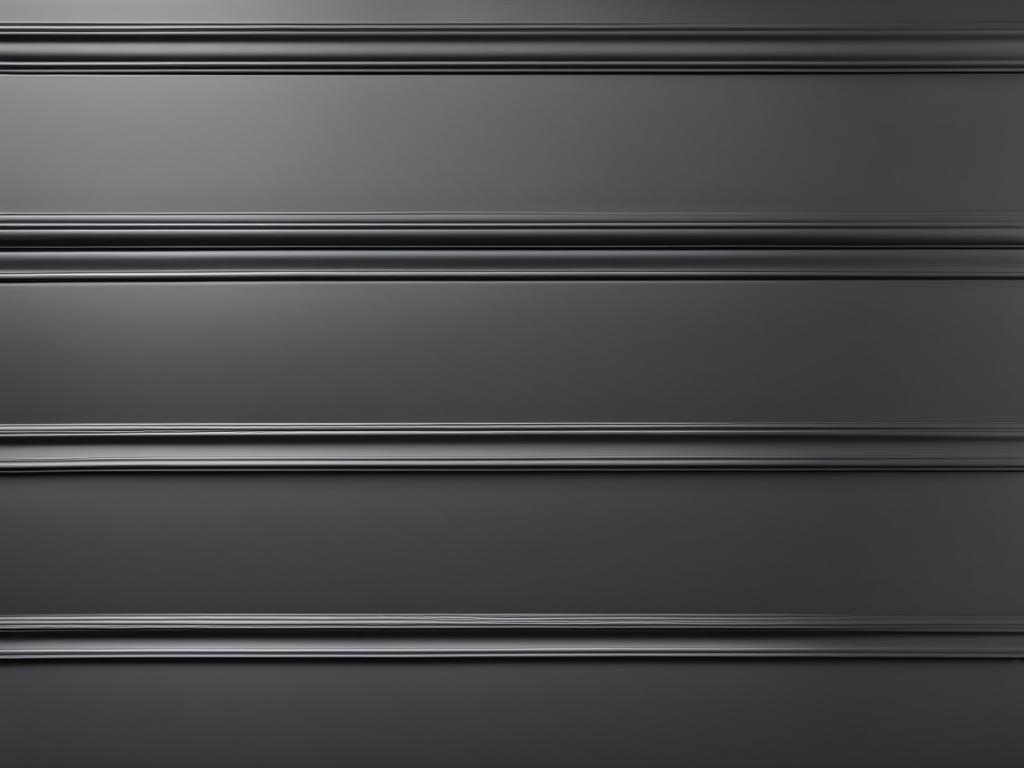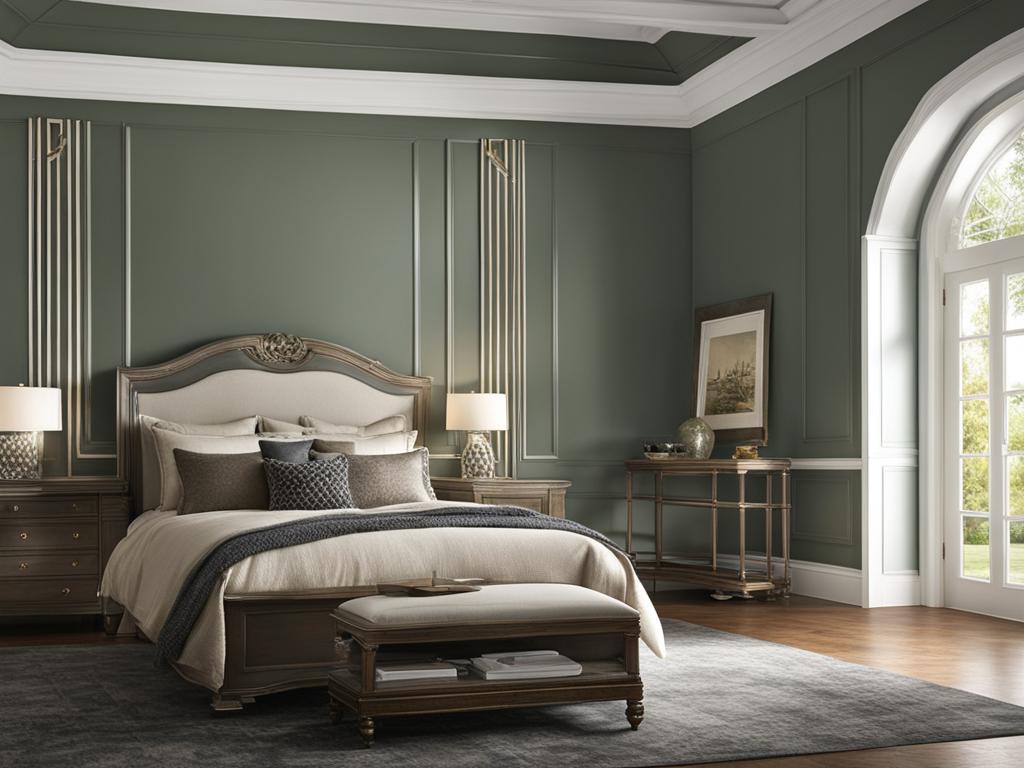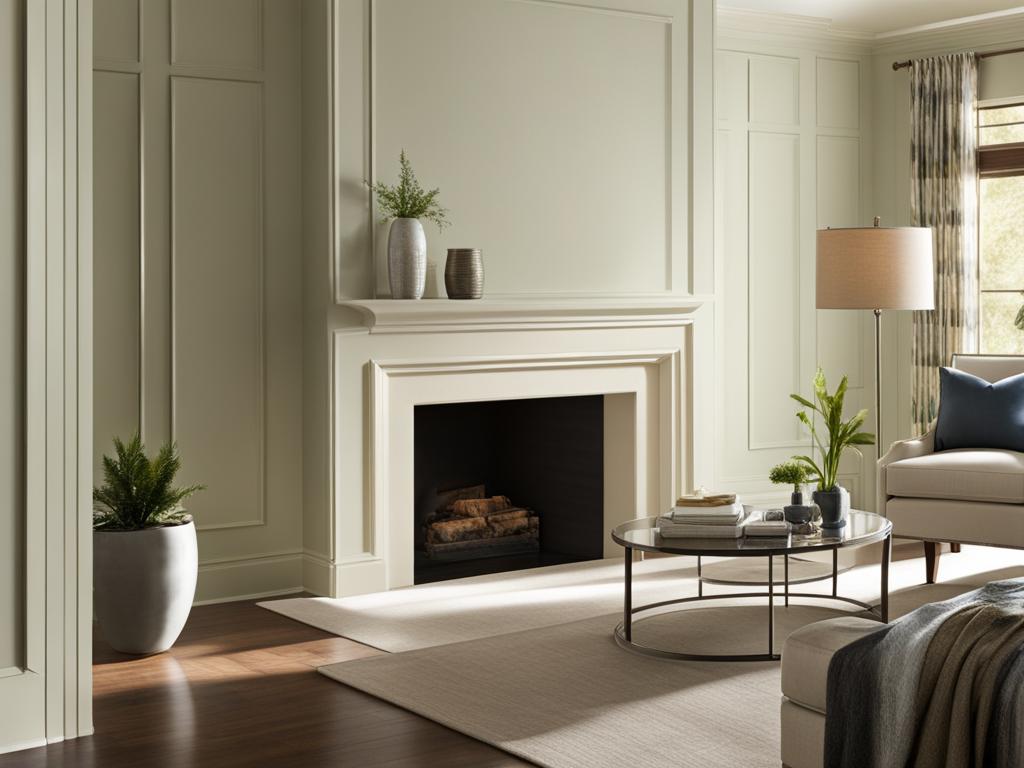Choosing the right paint sheen for your space can make a significant difference in the overall look and feel of a room. When it comes to Sherwin Williams eggshell and satin finishes, understanding their differences will help you make an informed decision. Let’s explore the unique characteristics and qualities of each finish, so you can select the perfect sheen for your project.
Key Takeaways:
- Eggshell and satin are two popular sheen options offered by Sherwin Williams.
- Eggshell has a delicate, velvety appearance with a subtle sheen.
- Satin has a higher sheen, reflecting more light and providing a durable finish.
- Satin is ideal for high-traffic areas, while eggshell is better suited for medium-to-low traffic spaces.
- Consider the specific needs of your project when choosing between eggshell and satin finishes.
Key Differences Between Eggshell and Satin Finishes
Eggshell and satin are both popular paint finishes that offer a low-to-medium luster. While they share some similarities, they have distinct differences. Understanding these differences will help you choose the right finish for your project.
Eggshell Finish
Eggshell paint has a subtler sheen compared to satin, giving it a softer, velvety appearance. It reflects and bounces light throughout a room, creating depth without appearing overly shiny. This finish is perfect for areas where you want a more understated look, such as living rooms and dining rooms.
Satin Finish
Satin paint, on the other hand, has a slightly higher sheen that is more reflective and durable. The added gloss provides a smooth, polished look that is suitable for high-traffic areas like bathrooms, kitchens, and kids’ rooms. Satin paint also works well on trim, highlighting the architectural features of a space.
| Eggshell Finish | Satin Finish | |
|---|---|---|
| Sheen | Subtle | Higher |
| Appearance | Softer, velvety | More reflective, polished |
| Durability | Less durable | More durable |
| Recommended Applications | Medium- to low-traffic areas | High-traffic areas, trim |
As you can see from the table, eggshell and satin finishes differ in terms of sheen, appearance, and durability. Choose eggshell for a softer, velvety look in low-traffic areas, while satin is the go-to option for high-traffic areas that require a more durable and polished finish.
Stay tuned for the next section, where we’ll delve into the appearance and durability of satin paint. You won’t want to miss it!
Appearance and Durability of Satin Paint
Satin paint, a popular choice in the world of interior design, offers a beautiful luster that can transform any space. With its velvety appearance and slightly higher sheen than eggshell, satin paint adds a touch of elegance and sophistication to your walls.
“Satin paint creates a luminous effect, reflecting light to enhance the overall ambiance of a room,” explains interior designer Maria Johnson.
This type of paint finish is known for its durability, making it an excellent choice for areas with high traffic such as bathrooms, kitchens, and kids’ rooms. The satin finish can withstand regular cleaning and is less prone to damage, ensuring longevity for your painted surfaces.
If you’re looking to add depth and dimension to a room, satin paint is the way to go. Its reflective properties enliven the color and create a subtle play of light and shadows. Whether you’re painting a statement wall or a whole room, satin paint will make your colors pop.
However, it’s important to note that satin paint may lose its sheen if scrubbed too roughly. To maintain its lustrous appearance, it’s best to clean satin-painted surfaces using a soft cloth or wipe and avoid abrasive scrubs or harsh cleaning agents.
To illustrate the differences between satin paint and other finishes, let’s take a look at the following comparison table:
| Satin | Eggshell | Flat | |
|---|---|---|---|
| Sheen | Medium-high | Low | None |
| Durability | High | Medium | Low |
| Reflectivity | Reflective | Subtle | Matt |
As you can see in the table above, satin paint offers a medium-high sheen, making it more reflective than eggshell paint. In terms of durability, satin surpasses both eggshell and flat finishes, ensuring long-lasting beauty for your painted surfaces.
So, if you’re looking for a paint finish that combines elegance, durability, and a hint of shine, Sherwin Williams satin paint is the perfect choice. Its velvety appearance and reflective qualities will transform your space into a stylish and resilient haven.

Appearance and Durability of Eggshell Paint
Eggshell paint, like Sherwin Williams eggshell paint, offers a unique aesthetic that adds a touch of elegance to any room. With its low luster and subtle sheen, similar to the surface of an eggshell, this finish reflects and bounces light throughout a space, creating a sense of depth and warmth.
Eggshell paint is an excellent choice for medium- to low-traffic areas, such as living rooms and dining rooms, where durability is still a consideration. While it may not be as resilient as satin paint, eggshell holds up better than flat or matte finishes. Its strength lies in its ability to mask minor wall imperfections, making them less noticeable compared to other finishes.
Benefits of Eggshell Paint:
- Subtle sheen creates a soft and inviting atmosphere
- Reflects light, providing a sense of depth to the room
- Ideal for medium- to low-traffic areas
- Helps conceal minor wall imperfections
When choosing eggshell paint, consider using an extra coat to enhance its ability to mask imperfections. This additional layer will make potential bumps or flaws less apparent, resulting in a smoother and more refined appearance.
However, it’s important to note that eggshell paint is not as durable as satin, so it may not be the best choice for high-traffic areas prone to heavy wear and tear. In those cases, a more robust finish like satin might be a better option.
“Eggshell paint has a subtle sheen that adds dimension to a room while still allowing other design elements to take center stage. It’s a versatile choice capable of creating a cozy, inviting atmosphere in various living spaces.”
When to Use Satin Paint
Satin paint is a versatile choice for various applications, offering both durability and aesthetic appeal. Here are some scenarios where satin paint is commonly used:
- Bathrooms: Satin paint is highly suitable for bathrooms due to its moisture resistance and easy maintenance. Its subtle sheen adds a touch of elegance to the space.
- Kitchens: Given the high traffic and frequent splatters in kitchens, satin paint is an excellent choice. It can withstand regular cleaning without losing its sheen.
- Kids’ rooms: Children’s rooms often endure heavy activity and spills. Satin paint’s durability makes it an ideal option, as it can withstand wear and tear.
Satin paint also has its place in highlighting architectural details, making it a popular choice for trim and mouldings. However, it’s important to note that the sheen of satin paint can accentuate surface imperfections. Therefore, it is advisable to ensure that your walls are smooth and free of blemishes before applying satin paint.

“Satin paint is the perfect balance between elegance and durability. It’s my go-to choice for spaces that require some extra protection without compromising on style.”
– Interior Designer, Jane Davis
Comparing Satin and Eggshell:
| Aspects | Satin Paint | Eggshell Paint |
|---|---|---|
| Sheen Level | Higher gloss with a soft sheen | Low luster with a subtle sheen |
| Durability | Durable and can withstand frequent cleaning | Less durable but can still hold up in medium- to low-traffic areas |
| Recommended Use | Bathrooms, kitchens, trim | Living rooms, dining rooms |
When to Use Eggshell Paint
Eggshell paint is a versatile choice for various areas in your home, offering a soft sheen and practicality in one. It strikes a balance between low and medium luster, making it suitable for spaces where you want a subtle shine without overwhelming reflections. Here’s a closer look at when and where to use eggshell paint:
- Living Rooms: Eggshell paint is an excellent option for living rooms, where you typically want a cozy, inviting atmosphere. The soft sheen adds a touch of elegance and enhances the appearance of your walls, especially if you have a well-curated gallery wall or statement artwork.
- Dining Rooms: Create a sophisticated ambiance in your dining room with eggshell paint. Its subtle shine can make your space feel more upscale, perfect for hosting dinner parties or family gatherings.
If you’re wondering about eggshell paint’s durability, it can withstand normal wear and tear, which is ideal for areas with standard foot traffic. However, keep in mind that it may not be the best choice for high-traffic areas or rooms prone to moisture, such as bathrooms and kitchens.
An advantage of eggshell paint is its ability to help conceal minor wall imperfections, such as bumps or small cracks. The subtle shine diffuses light, minimizing the appearance of flaws and creating a smoother overall look.
Remember, when selecting a paint sheen, consider both the aesthetics you desire and the practicality needed for the specific space. Although eggshell paint may not be as durable as satin, it offers a beautiful finish for areas that don’t experience heavy traffic or excessive moisture.
Conclusion
When it comes to choosing the right paint finish for your project, Sherwin Williams offers two excellent options: eggshell and satin. Each finish has its own unique characteristics that make it suitable for different applications.
Sherwin Williams satin paint offers a slightly higher sheen and greater durability, making it the perfect choice for high-traffic areas like bathrooms, kitchens, and kids’ rooms. Its reflective surface adds depth to a space and can withstand frequent cleaning without losing its sheen.
On the other hand, Sherwin Williams eggshell paint provides a soft and subtle sheen, similar to the surface of an eggshell. It is ideal for medium- to low-traffic areas such as living rooms and dining rooms. Eggshell paint is also great for camouflaging surface imperfections, making it a go-to option if your walls have bumps or flaws.
Ultimately, the decision between Sherwin Williams eggshell and satin finishes depends on your desired appearance, level of durability, and the specific needs of your space. By understanding the differences between the two finishes and considering these factors, you can confidently choose the right sheen for your painting project.
FAQ
What is the difference between Sherwin Williams eggshell and satin finishes?
Eggshell has a subtler sheen compared to satin, giving it a softer, velvety appearance. Satin has a slightly higher sheen that is more reflective and durable.
When should I use satin paint?
Satin paint is a great choice if you want to create understated depth in a space or enliven the paint color. It is also very durable, making it suitable for high-traffic areas such as bathrooms, kitchens, and kids’ rooms.
When should I use eggshell paint?
Eggshell paint is a great option for medium- to low-traffic areas such as living rooms and dining rooms. It is less durable than satin but still holds up better than flat or matte finishes. If your walls have bumps or imperfections, an extra coat of eggshell can help disguise them more easily than other finishes.
Which paint finish is more durable, satin or eggshell?
Satin paint is more durable than eggshell paint. It can withstand frequent cleaning and is often used in high-traffic areas. Eggshell paint is less durable but can still handle normal wear and tear.
Can I use satin paint on trim?
Yes, satin paint is a popular choice for trim as it emphasizes the architecture of a space. However, make sure your walls are smooth and free of blemishes, as the sheen can highlight imperfections.
Can I use eggshell paint in bathrooms?
While eggshell paint can withstand normal wear and tear, it is not as durable as satin paint, which is more suitable for bathrooms and other high-moisture areas.
How do I choose between Sherwin Williams eggshell and satin finishes?
Consider the specific needs of your space. Satin offers a slightly higher sheen and greater durability, making it ideal for high-traffic areas. Eggshell provides a soft sheen and is suitable for medium- to low-traffic areas. The best pick depends on your desired appearance, level of durability, and the specific application of the paint.
